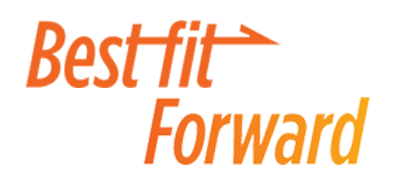As the countdown continues for the ball to drop in Times Square and we hope for a better job market in 2010, I’m hitting the pause button…and taking a quick look at the last 12 months. Clearly, these were not the easiest of times in the labor market—but I’ve watched a lot of people land great jobs. Over the course of the year, I reviewed over 200 resumes as Microsoft's Resume Specialist for the "My Resume Talks" program; I also spoke with job applicants at employer fairs and facilitated a job seekers group for the NYC MeetUp group. In the process, I saw many success stories.
Here are seven strategies that I’ve seen work in 2009.
1. Writing resumes for the “electronic eye.” As many online applications are read by scanning technologies before they are viewed by humans, start your resume with a summary of keywords and phrases that line up with job qualifications.
Tip: Check out the free Career Hub Insider’s Guide to Resume Writing
2. Looking in the mirror. While some make fun of the “ego search,” it’s important to know what employers will find when the “Google” your name—in an ExecuNet Survey, 86% of executive recruiters said they conduct online research of candidates. At best, your online presence can lead to new job opportunities. The worst-case scenario? Your candidacy could get eliminated based on your digital dirt.
Tip: Use William Arruda and Kirsten Dixson’s Online ID Calculator to assess your Google results; ideally, you want your first two page results to include a professional summary—e.g. your LinkedIn profile.
3. Being picky (to some degree). The phrase “I’ll do anything” should be left with Oliver Twist. Unless you really are happy performing the tasks in “50 Jobs Worse than Yours,” be clear about the types of work you can do well. When you put your best strengths, experience, and interests forward—you have a greater chance of being hired for a role in which the employer’s needs align with your strengths.
Tip: When applying for a job, show that you understand what the position entails—and ask questions that demonstrate you’ve given some thought to the specific position and hiring organization.
4. An appealing LinkedIn profile. As LinkedIn has a high search ranking, there’s a strong chance that your LinkedIn profile will be the first thing employers see when they Google your name. Spend as much time on your LinkedIn profile as you do your resume—it’s a great place for prospective hiring managers to assess your writing, interpersonal, and communications skills. My “top-of-mind” recommendation for writing a terrific LinkedIn profile is Chris Brogan’s “Write Your LinkedIn Profile for Your Future.”
Tip: Complete your profile—especially the “summary” and “specialties” section as employers and recruiters can search these fields by keyword. (One of my friends found a job this way—her employers found her!)
5. Getting “out there.” Last year, RiseSmart found that the average job seeker spends 50 hours a month or more online in pursuit of a job. Ever heard the oft quoted stat that 60-80% of job leads happen through networking? If you consider how many leads come from personal contacts and “face time,” spending hours online is not ideal. Several of the members of my job seekers group have found full-time work after taking on temp jobs, volunteering, and cold calling hiring managers in tandem with applying for jobs. There’s no substitute for a real voice connection or face time!
Tip: If you need to expand your network, join LinkedIn groups in your area of interest—and consider creating your own community of interesting people through Twitter. You can find people (and groups) to connect with via Twitter through Twellow, Wefollow and Listorious. As you can take LinkedIn and Twitter connections off-line, look at your online time as a springboard to meeting face-to-face!
6. “Hire me” campaigns can work, but only if there’s follow-up. From musical cover letters and sandwich boards to college graduates passing out resumes at stop lights, there’s no shortage of ingenuity in today’s labor pool. I’ve talked to many job seekers who’ve used the “clever approach” to get noticed. It often works, but once the 15 minutes of fame are up—employer attention often wanders as well.
Tip: If you use a “gimmick,” make sure you have a way to capture and follow-up on any contact information that you receive—from e-mail addresses to outreach received from others.
7. Maintain friendships. One of my clients landed a job this year after sending a thank you note to a firm that had rejected her (they reconsidered.) A college friend found a job over Facebook in six days. And over 1,000 job seekers found jobs through JobAngels—a grassroots movement where job seekers can receive individual help from volunteers. Staying in touch—and asking for help when you need it-- can take you a long way in your job search.
Tip: Whenever possible, “tag team” your job applications—identify a friend or hiring manager within the company you’ve applied to, and let them know you’ve applied.
These are seven best practices I’ve observed. What have you seen? Do you have any to add or modify?
